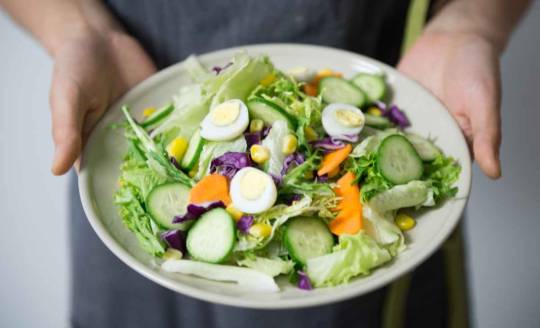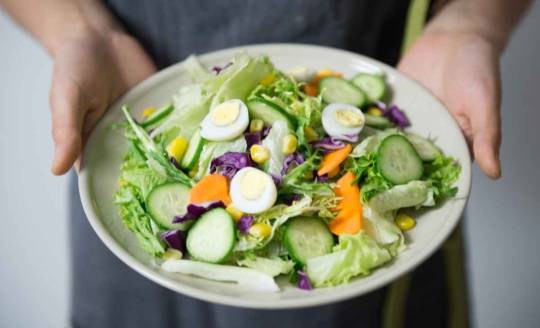#vegan history
Explore tagged Tumblr posts
Note
I respect vegans' love of animals, really I think animals deserve more compassion than they get. I am personally not vegan. I do not think it is wrong to eat the body of something that was once alive. Tbh thats including humans given the individual had consented, (ideally similar to how organ donations work). I think it is wrong to torture animals such as what factory farms do, I'm a strong believer in small-scale hunting and ethical farming, we as a species have been eating meat in some capacity for thousands of years, the best we can currently do is be kind about it. It's something we have to reconcile with as a species. Truly I don't think a vegan revolution will be viable until we have affordable lab-grown meat.
I disagree with everything you said, heres why. -"I respect animals" then immediately proceeds to call them "things". You respect humans because you considered their consent and previous lives in the matter and how your action may have affected them, you did not with animals. Animals do not consent to being raped farmed and slaughtered. Meat doesnt come from the sky. Vegans dont revere dead bodies either. This is not some religious crap. We care about the harm being caused to the living as a result of paying an evil industry and supporting an evil practice. We want to stop the breeding of animals for the sake of exploiting them. Vegans do not necessarily love nonhuman animals at all. Plenty dislike being around or are indifferent to nonhuman animals. Veganism is not rescue, its not about having a sex-buyer-like savior boner for them like carnists do. It's just sparing them and leaving them the fuck alone and not tormenting them. -The only way small farms are consistently "more ethical" is just that not as many animals are being abused. Any revolting disgusting practice you have seen a large scale farm practice, I have seen a small scale farmer do the same or worse. I have seen farmers prostituting their barn animals, I've seen countless horrific hoarding cases that arent technically illegal and so no one can do anything about it, I've seen every horrific practice from teeth cutting and tail docking to too small enclosures, shutting animals out to intentionally cause them to die by exposure, killing with a hammer etc etc etc. -There is no such thing as ethical exploitation. The animals in hunting zones are raised in game farms. Even if they werent, hunting is not ethical. I've seen deer with their jaws blown off slowly starving to death and every kind of terrible injury you can imagine, many inflicted on purpose. Not to mention how hunting is a practice that attracts sadists and abusers and preens their violent tendencies, increasing rates of domestic violence. -Appeal to tradition fallacy. And no it's not the best we can do lmfao veganism and not killing them is very obviously better than "being nice about how we kill them". You dont have to reconcile shit. Stop doing it. Literally just stop. Spare them. You have other food available that is nutritionally complete and cheaper that takes less resources to grow and distribute. A vegan revolution is and always has been viable since the dawn of man. People were opposing animal agriculture since it's inception. Pythagorus and his students didnt need lab grown meat in 470 BCE. Benjamin Lay didnt accept slavery of humans or animals in any capacity and refused to use horses and lived just fine. Coretta Scott King and Dexter Scott King both spoke of veganism being the next logical step to antislavery and were vegan animal rights activists. Alex Hershaft. I could go on and on and on. Please discuss this more with me if you are interested, or spend time immersing yourself in content made by animal rights activists and learn what we are actually trying to inform people of.
18 notes
·
View notes
Text
#vegan history
3300–1300 BC: first known vegetarian societies appear in what is today India
13 notes
·
View notes
Text
Check out the history of veganism
Veganism as a concept originated in the mid-20th century. Here are some notable milestones in the history of veganism: The Vegan Society: In 1944, the Vegan Society was founded in the United Kingdom by Donald Watson and his associates. They coined the term “vegan” to describe a vegetarian diet that excludes all animal products. Ethical Motivations: While vegetarianism had been practiced for…

View On WordPress
#food#Food a d drinks#Lifestyle#Vegan diet#vegan dinner ideas#vegan grilled cheese#vegan history#vegan lunch ideas#Vegan society#vegan types#Veganism#Veganism health
1 note
·
View note
Text
#oh we have a holiday?#vegan#how should i celebrate?#do..do i make a cake or other sweet treat?
Yes, we have a holiday!
World Vegan Day was first celebrated in 1994, so this was the 31st one. It was established by the Vegan Society on the 50th anniversary of the organisation, which was started in November 1944 with the publication of a newsletter called "The Vegan News". The exact day the Vegan Society was founded is unknown, so they picked 1 November because it would then coincide with Halloween, Samhain, and the Day of the Dead.
1 October is World Vegetarian Month and October is Vegetarian Awareness Month, so it's also a fitting follow-up to that. November is now also recognised as World Vegan Month. I live in Belgium and there are many vegan events all over the country this month. I imagine this might be the case in other countries as well.
You can celebrate however you want, or not at all, haha. I do always like to mark the occasion and connect with other vegans. When I lived in England, my housemate always insisted to hold a Halloween party, and because that usually went on throughout midnight, we made it (translation: I insisted it be) a combined Halloween/World Vegan Day party. People would bring vegan snacks and sometimes come in fitting costumes! 😁
Whether you celebrated or not, I hope you had a good one!
HAPPY WORLD VEGAN DAY EVERYONE!
We dream. We fight. We persevere. 💚 🙏
35 notes
·
View notes
Text









St Patricks Day Recipe Collection! For more St Patrick Day recipes click here.
Top Row:
Grasshopper Pie
Matcha Macarons
Mint Matcha Smoothie
Middle Row:
Mint Chocolate Chip Ice Cream
Matcha Crepe Cake
No Bake Chocolate Mint Slice
Bottom Row:
Mint Chocolate Cupcakes
Mint Chocolate Cookies
Thin Mint Truffles
#stpatricksday#st patricks day#food#recipe#recipes#saint patrick's day#saint patricks day#ireland#northern ireland#irish history#irish#gaelic#christianity#christian#christian living#christian faith#bible#jesus#faith#foodie#foodpics#foodporn#foodlover#vegan#foodstagram#foodgasm#foodblogger#foodphotography#green#collections
27 notes
·
View notes
Text

#tolkien#loroftherings#thelordoftherings#dimitaralekseevdimitrov#mysteries#history#ancientmysteries#ancientegypt#thecelts#ancientrome#ancientgreece#asatru#vegan#wicca#celtic gods#lord of the rings#norse gods#dimitardimitrov#silmarillion
29 notes
·
View notes
Text

ᴄʜᴀʀʟᴇs ʙᴇʟʟ 𝙂𝙪𝙢 𝘽𝙖𝙡𝙡 𝙉𝙤.𝟭𝟬: 𝙎𝙪𝙜𝙖𝙧 𝘿𝙖𝙙𝙙𝙮. 1975. Oil on canvas: 66 × 66 in. (167 × 167 cm).
#vintage#1970s#candy#pop art#70s#bubble gum#sugar#gum#chlorophyll#plants#art history#chewing gum#vegan#nostalgia#oil painting#humor#charles bell#oil on canvas#20th century#art#aesthetic#🟢 🔴 🟡 🔵 🟠
19 notes
·
View notes
Text









#͏ ͏ ͏ ͏ ͏ ͏ ͏ ͏ ͏ ͏ ͏ ͏ ͏ ͏ ͏ ͏ ͏ ͏ ͏ ͏ ͏ ͏ ͏ ͏ ͏ ͏ ͏ ͏ ͏ ͏ ͏ ͏ ͏ ͏ ͏ ͏ ͏ ͏ ͏ ͏ ͏ ͏ ͏ ͏ ͏ ͏ ͏ ͏ ͏#uzzlang girl#green icons#brown icons#circle icons#women#uzzlang icons#pfp icons#random icons#random#random moodboard#uzzlang moodboard#moodboard#literature#forest#go vegan#history#aesthetic icons#kpop layouts#kpop moodboard#kpop#ulzzang#ulzzang icons#ulzzang moodboard#ulzzang messy layouts#kpop messy layouts#twitter icons#instagram icons#kpop gg#brown moodboard
64 notes
·
View notes
Text
epic rap battles of history: that vegan teacher vs dr two brains
46 notes
·
View notes
Text
im going to be so brave in saying this but i think if you step outside of tv show characters or rage bait social media and interact with people in real life... people with no dietary restrictions are a million times more annoying than the average vegan could ever hope to be
#sorry you saw an annoying vegan on tv or the internet. or had like one bad experience once with a weirdo but#i dont see why my sensory issues making me go vegetarian means i have to apologize and answer for some random annoying person#and/or some fictional stereotype youve never even actually met. just bc in theory we might eat the same foods.#like man shut upppppppp#avpost#next time someone mentions eating chicken im going to get so weird about it like#oh... so youre. not. vegetarian? wow. why not. well. as long as you dont make fun of me for eating tofu i guess ill allow it.#actually can you make a point to be apologetic 2 me. bc one time someone who eats the food you eat was rude to me. so its your problem now.#and also i should be allowed to make fun of you for eating something that i think tastes worse than my version of it.#and you have to just be chill and also spill your entire dietary history to me so i dont assume youre the worst type of person you eat like
11 notes
·
View notes
Text
Do you know about MOVE ? These Animal Rights/ Human Rights activists were murdered by the Philadelphia police in 1985. The police dropped bombs on them while they were in their home, killing 11 activists including 5 children. The ones who survived the bombing and fires were met with police bullets as they ran outside. Only a few survived. Fuck the police.

5 notes
·
View notes
Text
#vegan history
~ 500 BC: Greek philosophers such as Empedocles and Pythagoras (partially) are said to have advocated against the killing of animals
12 notes
·
View notes
Text
Did you know veganism has also history

View On WordPress
#food#food and drinks#food articles#Health#Healthy drinks#Vegan#vegan history#Vegan society#Veganism#Veganism health#veganism types
0 notes
Text
A fresh zine order.






Left to right.
1. From a Matter of Principle to a Matter of Tactics by Anonymous
2. It All Goes or It All Stays the Same, by Spindrift
3. Vegan Cooking is Easy (Recipe Zine)
4. Counter-Info: A "How-To" Guide
5. An Herbal Medicine-Making Primer, by Simon the Simpler
6. The Cloak & Dagger Compendium Issue #2 - Lockpicking: A Handbook of Practical Skills and Invaluable Knowledge for Thieves, Rogues, Scallywags, & Other Disreputable Persons
7. Museifushugi: A Brief History of Anarchism in Pre-War Japan
8. Mutinies: Vietnam
9. The Diary of Bobby Sands
10. Illegalism: Why Pay for a Revolution on the Installment Plan…When You Can Steal One?, by Paul Z. Simons
11. Beyond the “Movement” – Anarchy!
12. Subversive Anarchy Past and Present, by Renzo Connors
13. Professional Anarchy and Theoretical Disarmament: On Insurrectionism, by Miguel Amorós
14. Illegal Anarchism: The false dichotomy, by Gustavo Rodriguez
15. Antagonistic violence: Approaches to the armed struggle in urban environments from an anarchist perspective, by Gustavo Rodriguez
16. Revolutionary Solidarity
17. Together We Can Break These Chains: Art & Writing by Trans Prisoners in Texas
18. Heart of A Warrior: 2 texts by NC prison rebel Joseph Shine White [You can write to Shine White at:
Joseph Stewart #0802041
Maury Correctional
PO BOX 247
Phoenix, MD 21131]
19. STG, Good Time, and the Malicious Demons of Coercion, by Jonathan Summers [ You can write Summers at: Jonathan Summers #459083
Chippewa Correctional Facility (URF)
4269 W. M-80
Kincheloe, MI 49784]
20. It's Time to Turn Up the Heat, by Dan Baker
#anarchism#distroism#vegan#opsec#lock picking#herbalism#bobby sands#japanese anarchism#anarchist history#illegalism#illegalist anarchism#individualist anarchism#insurrectionary anarchism#prisoner solidarity
9 notes
·
View notes
Text

Love how Franz Ferdinand did one of the most Belgian things after their gig here : going to the frituur and get fries and snacks
#the headline says it was the biggest vegan order in the history of that place#hope they liked it#franz ferdinand
7 notes
·
View notes
Text

Dubai Chocolate Bar
#Dubai#Middle East#middle eastern#sweet#dessert#desserts#chocolate#candy bar#candy bars#chocolate bar#chocolate bars#pistachio#pistachios#pistachio butter#recipe#recipes#vegan#food#vegetarian#veganism#middle eastern cuisine#middle eastern history#middle eastern food#dubailife#visit dubai#chocolate lover#cooking#baking#foodpics#food photography
19 notes
·
View notes